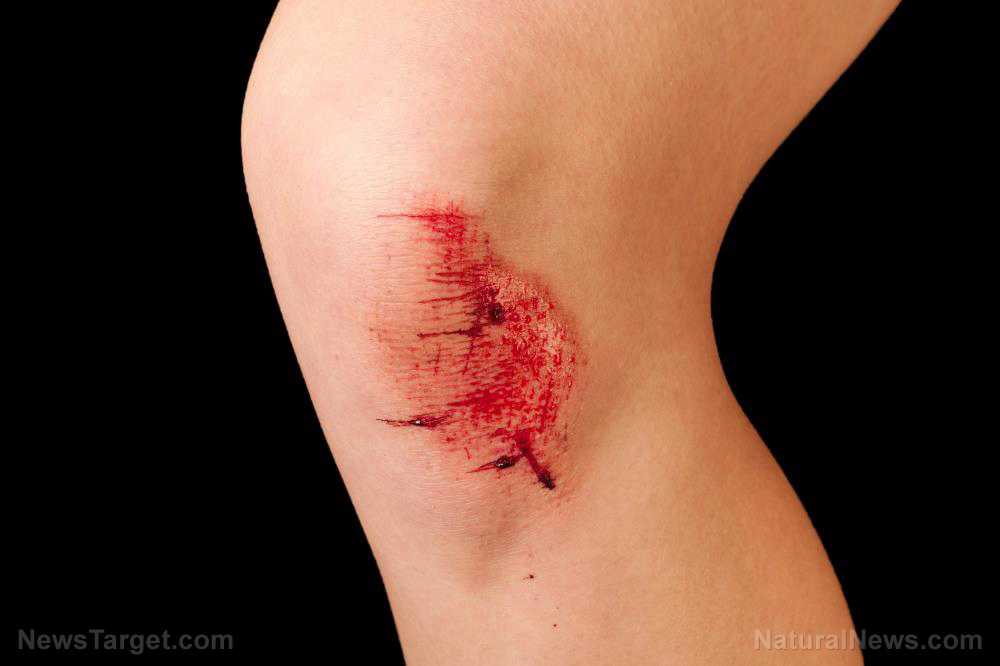Coronavirus killing robots could be deployed by the military
05/08/2020 / By Franz Walker

The military could deploy autonomous “corona-killing” robots that use ultraviolet (UV) light to disinfect closed spaces. The four-wheeled robots are said to be able to perform tasks in a matter of hours that would take human workers days to complete.
Turning robot targets into virus killers
To develop the disinfecting robots, a company called Marathon Targets is retrofitting its Robotic Moving Targets to carry UV lamps in place of target dummies. Developed to help in training exercises, these robots are designed to move in a manner that mimics human combatants without the need for a human controller. To fight the coronavirus, the company wants to use the robot’s movement capabilities to disinfect confined and enclosed spaces such as barracks and mess halls. (Related: UV robots sweep hospitals, killing the coronavirus using light.)
“If you need them for target practice, you use them for target practice; if you need them for corona-killing, you use them for corona-killing,” Ralph Petroff, president of the North American branch of Marathon Targets told Military.com.
According to Petroff, the company acquired UV disinfecting panels earlier this month, and their team installed them on the robots in just a matter of hours. He claims that multiple military installations have expressed interest in seeing the robots’ capabilities demonstrated. However, he asked that the bases in question not be named as the matters surrounding the robots’ acquisition were still predecisional.
Marathon states that the robots are capable of radiating roughly 110 watts using a vertical UV mount that looks similar to a fluorescent light fixture. It takes just over a minute for the robot to disinfect a surface from two feet away, and six minutes from five feet away.
Currently, the market for UV disinfection has been small. According to Petroff, this is because the work is quite manually intensive. However, he believes his company’s robotic mounts can change that.
“The UV part is the easy part,” he said. “Trying to get an autonomous robot to walk around without bumping into things and knowing where it is at all times is the hard part. We mastered that a long time ago.”
Marathon has already worked with the 2nd Marine Division, based out of Camp Lejeune, North Carolina, who integrated the robots into their training.
Petroff says that the company is just waiting for word from the bases and units it’s been in touch with that they’re ready to deploy the robots as a service.
“We can certainly clean up after hours at a mess hall or a gymnasium,” he stated. “My hope is, if we get more proficient at this, we could do multiple cleanings a day.”
Exploring the potential of UV light in killing the virus
Even as Marathon looks to deploy its system on bases, the question remains on just how effective UV light is at killing the SARS-CoV-2 virus responsible for COVID-19. Most methods of UV sterilization use what’s called ultraviolet C (UVC) light, a highly dangerous form of UV light that can cause sunburns in seconds.
While there hasn’t been any research on how UVC affects COVID-19 specifically, studies have shown that it can be used against other coronaviruses, such as the one behind the 2004 SARS outbreak. The UVC radiation was shown to warp the structure of that virus’s genetic material, preventing it from making more copies of itself.
A recent study on whether UVC could be used to disinfect personal protective equipment shows that, while it is possible to kill the coronavirus this way, it needed the highest exposure out of hundreds of viruses that were looked at. Additionally, the amount of UVC required varied widely, depending on the shape and type of material the virus was on.
This brings into question just how effective an expensive robot can be at killing the virus. As smart and maneuverable as they are, the modified Robotic Moving Targets are still effectively just remote standing UV lamps on wheels — they could still miss out on providing the necessary amounts of UVC into hard to reach areas.
Then there’s the issue of cost. When the 2nd Marine Division worked with Marathon, they spent $2.1 million to lease just 16 of the target robots. With this in mind, bases could end up spending a lot of money on UV technology that’s yet to prove its worth in the fight against the coronavirus.
Sources include:
Tagged Under: automation, coronavirus, covid-19, drones, Flu, hygiene, infections, medical tech, military, outbreak, pandemic, robotics, robots, sanitizing, steriliation, superbugs, Ultraviolet light, USA, UVC, virus
RECENT NEWS & ARTICLES
COPYRIGHT © 2017 MEDICALTECH.NEWS



















